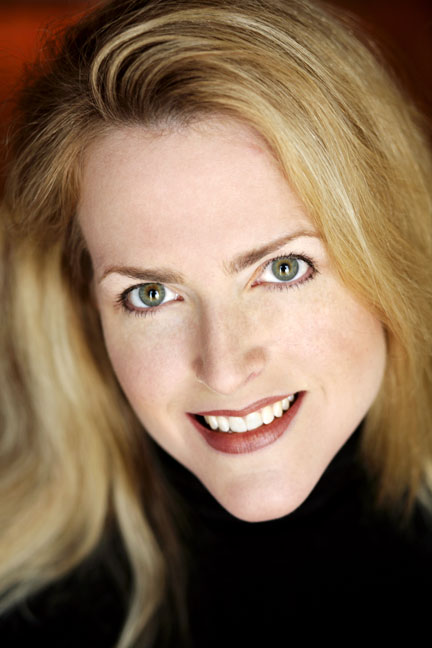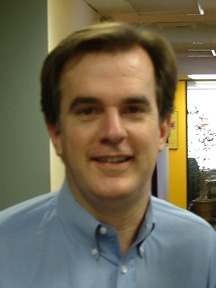 Next week, on Wednesday, September 30, Mary Beth West will be telling new PR pros how to generate opportunity and avoid common mistakes in the teleseminar, Navigating the Terrain of Your First Professional Years.
Next week, on Wednesday, September 30, Mary Beth West will be telling new PR pros how to generate opportunity and avoid common mistakes in the teleseminar, Navigating the Terrain of Your First Professional Years.
Mary Beth West currently manages her own public relations consulting firm near Knocksville, Tenn., and she has been very active in PRSSA and PRSA, including being a co-founder of this New Professionals of PRSA Section!
We asked Mary Beth some questions about herself and her upcoming teleseminar. Check out this Q&A, and to hear more, register for Navigating the Terrain of Your First Professional Years. (Keep in mind, you must register ASAP if you want to phone-in to the live event!)
1. You are one of the founders of the New Professionals Section. What motivated you to try to start a new section?
PRSA’s member demographics had shifted somewhat younger in the 1990s to early 2000s. The Society needed a section that served the immediate needs of new public relations professionals — whether they were younger 20-somethings coming straight out of undergraduate public relations programs or individuals who were switching careers with perhaps 10 or more years of experience under their belt in another profession. Beyond the demographic opportunity, it was very important to create a place within PRSA that could serve the needs of these new professionals and enable them to utilize their own skills and insights. It needed to be a self-directed group to create leadership opportunities, professional development, and networking that spoke to their interests and changing needs. Helping set the initial course for New Professionals has been one of the most rewarding volunteer tasks of my PRSA involvement.
2. How did you go from PR newbie to starting your own consulting firm?
I was lucky to start my career in the agency business, interning in school and later working for both small firms in mid-size markets to a large agency in New York. The diversity of experience and exposure to so many different companies and organizations was an excellent eye-opener on what the possibilities and opportunities are in the field.
In terms of how I transitioned from my early years in the business to ultimately owning my own firm . . . I guess the key to it is that I not only embrace change but also thrive on it. I never like to get into a comfort zone with what I’m doing professionally, because to me, it quickly turns into a rut. I’m always seeking out challenges because I genuinely enjoy them and relish the opportunities they offer to become better at my work. And to be self-employed, you have to have that energy and that ability to face ever-changing circumstances.
3. One of the things you’ll discuss is a “three-year career plan”. Why is such a thing helpful/important for new pros?
As they say, if you don’t plan on going anywhere in particular, you’re sure to get there fast! While a new pro’s first years in the public relations field may be a time for exploration and not being sure what the immediate future holds, it’s important to ask oneself some challenging questions that will lead you to where you ultimately want to be. Only then can you begin creating a definitive plan for how to get from Point A to Point B.
For example, what kind of work do you truly enjoy and get personal satisfaction from doing (beyond getting a paycheck)? What are the work-reward values that mean most to you? What industry or organizational sector is most fascinating to you and where you see the most potential for you to utilize your interests, talents and skill sets? Once you’ve answered these and similar questions, you can start mapping out the experience you need to start accumulating, the networking/professional relationships you need to start building, and the types of companies or organizations you need to start researching for near-term job opportunities.
4. What do you think is one of the most challenging aspects of being a new pro, and how do you think it can be overcome?
In terms of strategic skills, PR pros must always maintain an acute understanding and sensibility about how their stock-in-trade–building communications, relationships and reputations–impacts the overall success of their clients or employers, particularly in financial terms to generate revenue and mitigate expense. Only then can you really achieve resonance between what your employer/client needs from you and what you have to offer. Sometimes, professionals in our field are expert technicians in the tools and tactics of our profession but are lousy at translating the value of those tactics into a real business strategy that is designed to make money for the company or otherwise achieve a very critical business objective. And until you have the capability of connecting those dots on your own, your career progression will be limited.
Regarding the more tactical skills, the thing I see lacking too often is attention to detail. Cutting corners just doesn’t work in this business. There is often an entire mindset or attitude that goes with that tendency, and it’s generally revealed readily in many different ways, such as a person’s writing style (short on clarity and rife with errors), verbal communications style (a lot of “you know”s and “like”s), and even the way they present themselves (lack of eye contact, a lazy handshake and a bit-too-casual dress code). My advice: Sweat the small stuff. It’s often the little things that either solidify good impressions or send them packing.
5. What are tips or information are you most excited about sharing during the teleseminar?
Like Generation X–which I am part of and in the 1990s was conveniently termed the “slacker” generation right as I entered the profession–I think Generation Y often gets a bad rap with the whole “trophy kids” and “helicopter parents” attributions. That imagery can lead some employers and supervisors to make automatic negative assumptions about younger new professionals before they have had a chance to prove themselves. I’ll address that issue and how new professionals can overcome it in a workplace.
—
MARY BETH WEST will be presenting Navigating the Terrain of Your First Professional Years: Generate new opportunities for yourself while avoiding common mistakes on Wednesday, September 30. For more information and to register, go to the event site.

